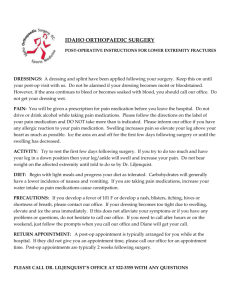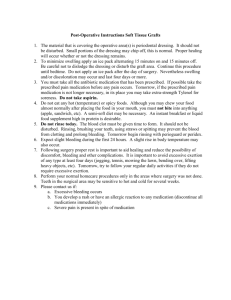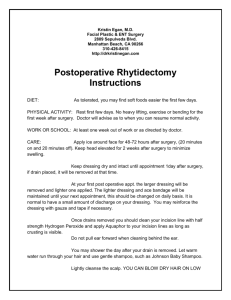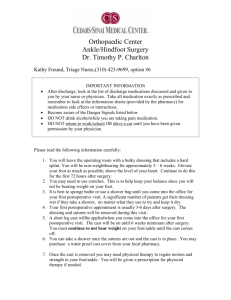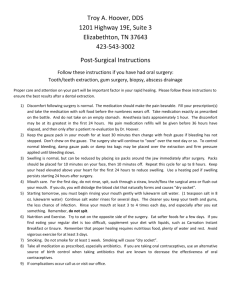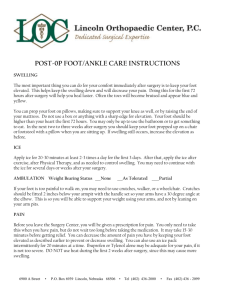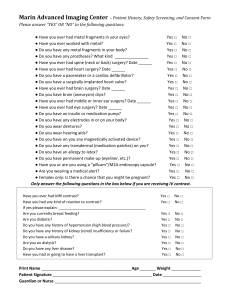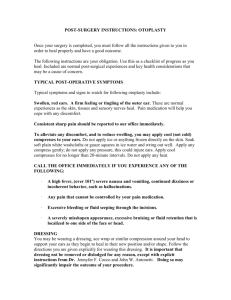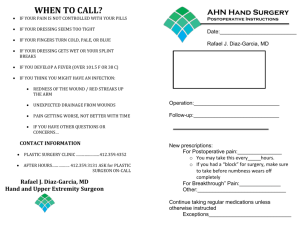File
advertisement
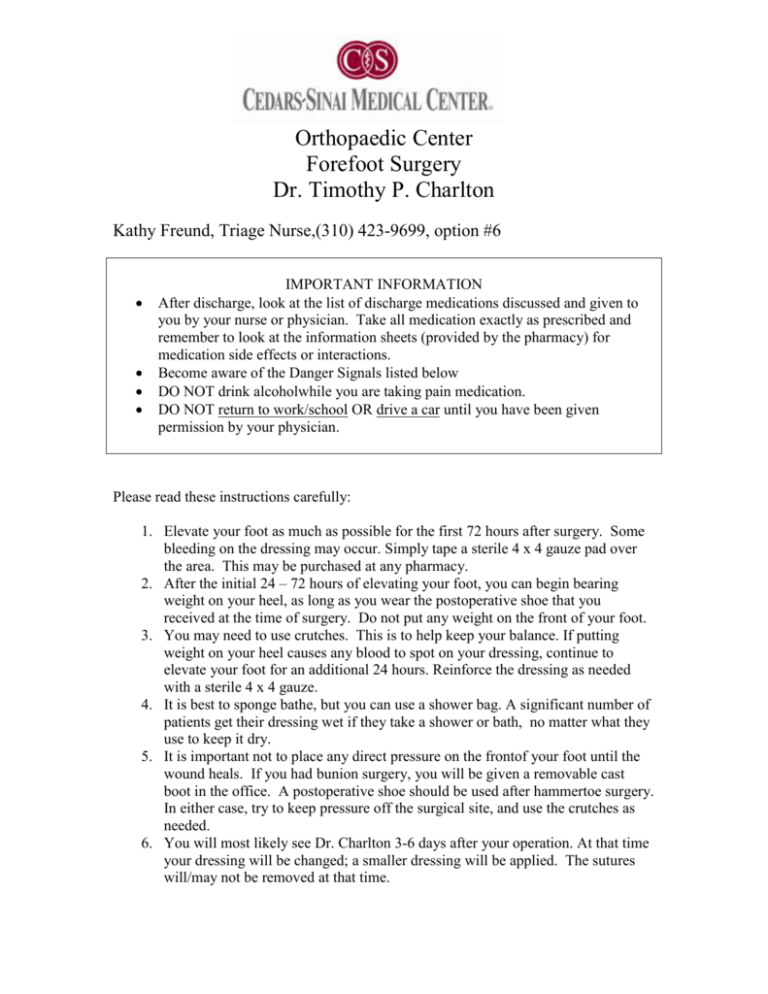
Orthopaedic Center Forefoot Surgery Dr. Timothy P. Charlton Kathy Freund, Triage Nurse,(310) 423-9699, option #6 IMPORTANT INFORMATION After discharge, look at the list of discharge medications discussed and given to you by your nurse or physician. Take all medication exactly as prescribed and remember to look at the information sheets (provided by the pharmacy) for medication side effects or interactions. Become aware of the Danger Signals listed below DO NOT drink alcoholwhile you are taking pain medication. DO NOT return to work/school OR drive a car until you have been given permission by your physician. Please read these instructions carefully: 1. Elevate your foot as much as possible for the first 72 hours after surgery. Some bleeding on the dressing may occur. Simply tape a sterile 4 x 4 gauze pad over the area. This may be purchased at any pharmacy. 2. After the initial 24 – 72 hours of elevating your foot, you can begin bearing weight on your heel, as long as you wear the postoperative shoe that you received at the time of surgery. Do not put any weight on the front of your foot. 3. You may need to use crutches. This is to help keep your balance. If putting weight on your heel causes any blood to spot on your dressing, continue to elevate your foot for an additional 24 hours. Reinforce the dressing as needed with a sterile 4 x 4 gauze. 4. It is best to sponge bathe, but you can use a shower bag. A significant number of patients get their dressing wet if they take a shower or bath, no matter what they use to keep it dry. 5. It is important not to place any direct pressure on the frontof your foot until the wound heals. If you had bunion surgery, you will be given a removable cast boot in the office. A postoperative shoe should be used after hammertoe surgery. In either case, try to keep pressure off the surgical site, and use the crutches as needed. 6. You will most likely see Dr. Charlton 3-6 days after your operation. At that time your dressing will be changed; a smaller dressing will be applied. The sutures will/may not be removed at that time. 7. Most patients will return to a comfortable walking shoe within 6 -8 weeks after surgery. Flat dress shoes can be worn by 10 – 12 weeks after surgery. Swelling may occasionaly delay wearing flat dress shoes. 8. One week after the operation you will start some gentle range of motion of the involved toe. 9. Formal physicial therapy is not usually required, but it may be beneficial to some patients. 10. You may experience occasional swelling for up to six months after surgery. Call the office if you notice any of the following symptoms: 1. 2. 3. 4. 5. Temperature over 101° F. Excessive bleeding from the incision. Foul smell/cloudy drainage from the incision. Increasing, severe pain not relieved bymedication Markedly increased swelling in your leg/calf. You have been prescribed a pain medication which has a number of side effects. Most common side effects are drowsiness, nausea and/or vomitng, itching, constipation and irritability. If these are prolonged or severe, your pain medication may need to be changed. You must contact the office during regular business hours to have a new prescription written. California law has changed and now only allows for narcotic medication to be given in a written form. The law does not allow for these medications to be called in.
